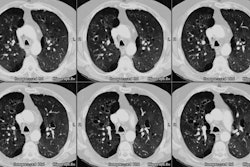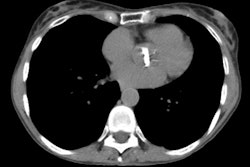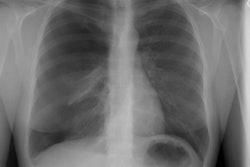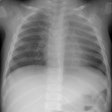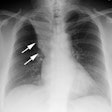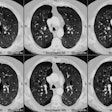AJR Am J Roentgenol 1997 Apr;168(4):1045-1050. Correlation of high-resolution CT and pulmonary function in bronchiolitis obliterans: a study based on 24 patients associated with consumption of Sauropus androgynus.
Yang CF, Wu MT, Chiang AA, Lai RS, Chen C, Tiao WM, McLoud TC, Wang JS, Pan HB
OBJECTIVE: An outbreak of Sauropus androgynus-associated bronchiolitis obliterans occurred in Taiwan in the summer of 1995. We undertook a study of the correlation between high-resolution CT findings and pulmonary function testing in patients from this outbreak. MATERIALS AND METHODS: We evaluated inspiratory-expiratory high-resolution CT scans of 24 patients with S. androgynus-associated bronchiolitis obliterans. The presence of bronchiectasis was assessed by two visual scores (a bronchial dilatation score and a bronchiectasis extent score). Extent of air-trapping was assessed visually and given a score. We also used computer software to assess the extent of air-trapping and generate scores of dynamic attenuation. Spirometry, plethysmography, and diffusion capacity of each patient were also obtained. RESULTS: All four scores had statistically significant correlation with forced expiratory volume in 1 sec (FEV1) (p < .05 for both bronchiectasis scores; p < .001 for both air-trapping scores). The two air-trapping scores had statistically significant correlation with forced vital capacity and diffusion capacity. We found the scores for dynamic attenuation had the greatest correlation with FEV1 (r = .85). We also found that mosaic attenuation was notable on expiratory CT scans alone in nine patients (type 1 air-trapping) and on both inspiratory and expiratory CT scans in 15 patients (type 2 air-trapping). In the latter group, FEV1 was significantly lower (p < .01). CONCLUSION: Findings from high-resolution CT of air-trapping were more important than findings of bronchiectasis when correlating pulmonary function with S. androgynus-associated bronchiolitis obliterans. Type 2 air-trapping suggested a more severe air-flow obstruction than did type 1. Scores for quantitative attenuation generated by computer software were helpful in assessing air-trapping and correlating it with pulmonary function. These findings may apply to patients with bronchiolitis obliterans from other causes.
PMID: 9124113, MUID: 97243333

